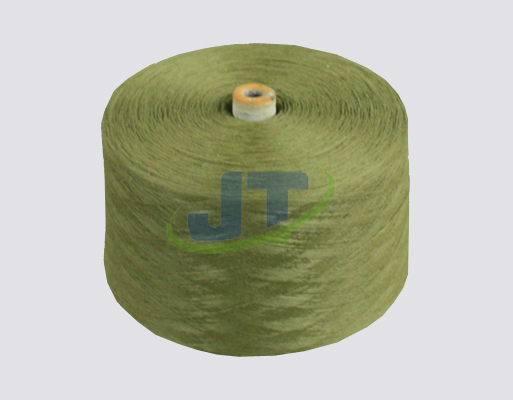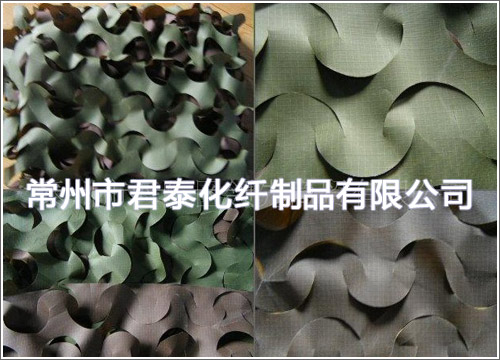

- Tel:0086-519-83783531
- cel:0086-13961177625
- E-mail:jianglijing1022@126.com
- add:cheng zhang Jia zeTown Wujin District, Changzhou City, Jiangsu Province
As a big textile export country, what is the impact of RMB depreciation on textile enterprises?
Home textile leading enterprises Vosges shares for investors recently said that the depreciation of the renminbi is conducive to the company's exports. Jiangsu Guotai, which mainly focuses on garment and knitting import and export trade, also said that the company pays close attention to the changes in the international market environment and exchange rate changes, and the moderate depreciation of the renminbi is conducive to the company's foreign trade export business.
In the short term, the fluctuation of the exchange rate has brought some good news to foreign trade enterprises, and some foreign trade personnel have also quickly adjusted the exchange lock and pricing response, in order to enhance their competitiveness in the severe foreign trade situation.
"I thought it would be around 6.8 for a while, but I didn't think it broke 6.9 so soon." Meng Zhuo, manager of a garment foreign trade company in Anhui province, said they have decided to suspend the exchange rate lock for all orders at the end of this year due to the recent significant decline in the yuan exchange rate.
As always in the front line of sales, Meng Zhuo frankly, from the current domestic and foreign markets, the foreign trade situation will not be too optimistic. After suspending the lockup for the rest of this year, the company plans to lock up 30 to 50 percent of orders over $500,000 from March to April next year.
Zhao BenZHI, DIRECTOR of BUSINESS OF foreign TRADE OF Shanghai PUQI TEXTILE, EXPRESSES, BECAUSE BUSINESS VOLUME IS not BIG, THE COMPANY LOCKS COLLECT TO DO NOT MUCH, BASICALLY IS GO BY the MARKET, BUT CAN CONSIDER THE TREND CHANGE OF exchange RATE WHEN QUOTATION, RELAX relevant AGREEMENT A BIT.
It can be said that exchange rate fluctuation is expected for foreign trade enterprises, but also has become a "normal" challenge faced by enterprises.
A foreign trade personage in the textile industry said that the recent depreciation of the RMB against the US dollar has an overall impact on the production and operation of the textile industry in three aspects: for enterprises with a high proportion of export sales, enterprises with more US dollar assets will benefit; For the upstream raw materials purchase is not entirely domestic, highly dependent on imported raw materials such as imported cotton, cotton yarn, equipment and so on, such enterprises will be negatively affected; For the enterprises with dollar foreign debt or forward exchange settlement, it will affect the expected earnings of enterprises. For some large enterprises, these three conditions coexist, and specific enterprises are affected by different degrees.
Yao Yu, an analyst with Hua 'an Futures, believes that foreign consumers' purchasing power for Chinese products will increase significantly due to the depreciation of the yuan. For Chinese export enterprises, it may mean receiving more orders. Even if the number of orders received is the same as in previous years, the operating income of enterprises will be increased. This is one of the main reasons why our textile export data is still performing well this year. Of course, the depreciation of the renminbi has both advantages and disadvantages. For imported goods, it will cost more. As a result, we can see that the quantity of imported cotton and cotton yarn has decreased recently, which is partly due to the higher cost caused by the depreciation of the renminbi.
Jinjiang City dyeing and finishing industry association deputy secretary-general Luo Yucheng told reporters that the depreciation of the renminbi has a positive role in promoting exports, but should not overestimate its impact. Since most enterprises have previously taken a series of measures to hedge exchange rate risks, such as import hedging, dollar financing and forward foreign exchange transactions, the degree of positive impact on performance should be analyzed on a case-by-case basis. He suggested that textile enterprises should pay close attention to the changes of international market environment and exchange rate in order to obtain more benefits and improve the ability of foreign exchange to resist risks by optimizing the structure of foreign currency assets and liabilities reasonably.
Zhu Yuxing, head of the information department of China Chamber of Commerce for Import and Export of Textiles, said that the current depreciation of the RMB against the US dollar is mainly due to the short-term fluctuations caused by the rapid strengthening of the US dollar index, and there is no strong expectation of depreciation. The short-term pressure on the RMB exchange rate will not change the long-term stable pattern. Textile and clothing export enterprises are concerned about "breaking 7", more because of the psychological integer threshold.
Zhu Yuxing pointed out that although the depreciation of the domestic currency is conducive to exports, export enterprises still hope that the exchange rate fluctuations within a stable range. The impact of RMB exchange rate fluctuation on export enterprises is mainly reflected in two aspects, one is the settlement of foreign exchange, the other is the price of raw materials. In terms of exchange settlement, generally speaking, the lower the exchange rate, the more favorable exports. However, when the exchange rate drops, overseas orders will also be priced down, and the time of exchange collection is uncertain. If the spot exchange rate at the time of exchange collection fluctuates again, there is a risk that the gains will be outweighed. In terms of raw material prices, the low exchange rate of RMB is not conducive to imports, which leads to the increase of import prices of cotton, chemical fiber and other raw materials used in production, and will drive up the production costs of export spinning enterprises.
Zhu Yuxing said that after years of experience, export enterprises in the face of the RMB exchange rate fluctuations gradually cope with the ease. Both large export spinning enterprises and small, medium and micro export spinning enterprises have accumulated some experience in avoiding trade exchange rate risks, and their exchange rate risk management ability has been continuously enhanced.
Zhu Yuxing said there is no need to overemphasize the depreciation of the RMB exchange rate at present. If the RMB tends to depreciate excessively in the future and affects the country's financial security, the central bank will definitely take measures to stabilize the exchange rate. In the long run, moderate bidirectional fluctuation of RMB exchange rate is normal. Overall, the impact on export enterprises controllable.
Despite the increasing complexity of the global economic and monetary policy situation, experts generally say that the yuan remains remarkably resilient.
China Merchants Securities analysis pointed out that the dollar continues to be a strong probability until the Federal Reserve rate hike ends, European energy risks lifted, is expected to inflection point at the end of this year to early next year. Ming-ming, chief economist of CITIC Securities, believes that the balance of payments in 2022 is in a state of balance, and the renminbi is likely to remain volatile.
Wu Dan from the Bank of China Research Institute analyzed in the 135th issue of Economic and Financial Hot Topics in 2022 that there is still strong support for the stable RMB exchange rate in the medium and long term. First, a sound relationship between foreign exchange supply and demand is a key support for the RMB exchange rate. According to the foreign exchange settlement data released by the State Administration of Foreign Exchange on August 15th, China's current account surplus in July was 15.978 billion US dollars, which was significantly higher than that in June. The trade surplus in goods was $30.692 billion, up 20.94 percent from June. The growing current account surplus is conducive to partially offset the impact of short-term capital outflow and maintain the overall stability of supply and demand in the foreign exchange market. Second, RMB exchange settlement and sales are expected to be stable. From the market expectations, the Federal Reserve hawkish interest rate rhetoric did not constitute a Mrs. Impact on the foreign exchange demand for renminbi. Dollar/yuan spot ask volume on Aug. 29 was $41.02 billion, up 25.76% from the year-to-date average of $32.617 billion, compared with an average of $40.193 billion for the entire month. All in all, with the support of various domestic policies, the domestic economy will still have a strong momentum of repair in the second half of the year. The balance of international payments is sound, the scale of foreign exchange reserves is reasonably sufficient, and the RMB exchange rate will fluctuate in both directions within a reasonable threshold range. Enterprises and the market should also hold the risk-neutral concept, take the actual demand as the guidance, and actively seek a reasonable hedging of foreign exchange derivatives.
- Let's take a look at the diversi
- China is directly facing the imp
- What are the core advantages of
- In November, the decline in Chin
- What is the value of Polypropyle
- The 2025 Textile Industry Discip
- The core performance advantages
- Black Friday is becoming a perfo
- Why has polypropylene high-stren
- The global trade landscape is un




